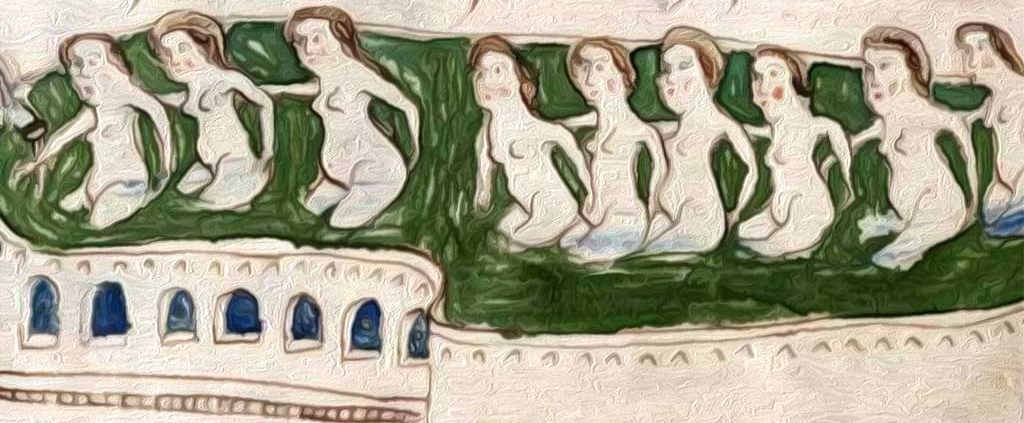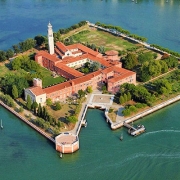Decrypted or not decrypted? That is the question! And the mistery continues
Reputed to be the discovery of the century – just recently press articles excitedly announced that one of the most mysterious ancient texts in the world, the Voynich manuscript had finally been decrypted after more than a century of relentless attempts. News stories were filled with hacker jargon: the code had been “cracked”, “no more secrets”. Everybody was thrilled and no one more so than the transcripters and translators at Galactus, all very eager to find out what was going on. Going right to the source Galactus managed to get hold of the papers published by Gerard Cheshire, PhD, research associate at the University of Bristol (UK) and author of these revelations. A read of his work left us enthusiastic. A couple of days later however, the scientific community began to heavily criticise Cheshire’s method of research and the conclusions he had reached. We discovered in fact that the researcher is not a linguist, but a science writer and specialist in Human Behavioural Ecology.
As a result of the uproar, the University of Bristol decided to distance itself from its research associate and released a statement in which it made clear that the work is entirely the author’s and is not affiliated with the University. The initial story was taken down from the University’s website. Much ado about nothing? The Italian press would have done better to show more prudence. Some foreign media like The Guardian, for example were more cautious and somewhat sceptical when they published an article on the 16 th of May 2019 entitled: Latin, Hebrew … proto-Romance? New theory on Voynich manuscript.
What is all the fuss about?
An ancient manuscript purchased in Italy in 1912 by Polish book dealer Wilfrid M Voynich to which the manuscript owes its name is today held at the Beinecke Library, University of Yale (USA) where it is catalogued under call number MS408. It has been carbon-dated to the first half of the 15th century. Cheshire claims that the manuscript was compiled at the court of Maria of Castile on Castello Aragonese just off Ischia. The manuscript has always been considered unintelligible and a true mystery. The document is superbly preserved with the hand writing clear and legible, but the alphabet used is incomprehensible. It seems to be written in a cypher interrupted every now and then by bizarre drawings of naked women bathing in green waters, strange and alien-like plants, dubious geographical maps (considering that they are from the 15th century…), strange natural elements and constellations.
Over time, numerous hypotheses to explain the ancient manuscript have been put forward. It has been claimed a fake harbouring strategic political and military communist secrets from the Cold War or a book on Black Magic or that it was written by a historical figure wanting to conceal his identity. Even America’s National Security Agency and famous mathematician Alan Turing have tried and failed to decipher it. For some linguists the most plausible explanation is that it is a phonetic transcription of Ancient Turkish. The truth of the matter is that as of yet no one has managed to decrypt the secret codex and make sense of the text, that is of course up until a short time ago when the earth shattering news about G. Cheshire from the University of Bristol and the manuscript hit the headlines.
Transcription: Cheshire’s method
In his paper“Linguistic Missing Links” (2017) Cheshire reveals that he took a different approach to decrypting the document. He abandoned the widespread conviction that the text had been written with the express purpose of making it unintelligible. Couldn’t it simply have been written in a language that was spoken at the time, in that part of the world that had never previously been scribed? His theory is simple – how would we be able to write a sentence in Russian without first knowing the alphabet? We would try to write down what we heard without knowing where one word or sentence stops and another begins. So no capital letters, no punctuation marks, no accents… the whole text would appear as a single, very long, never ending sentence.
To complicate matters, according to Cheshire, the symbols can have different meanings depending on where they are placed in a text. Symbols can also be used to show punctuation and spacing. For example, in his opinion, the phoneme /t/ and the letter T are used instead of a full stop but then also as a consonant. The same thing can be seen in the case of other phonemes and letters. Once a word has been identified it could also represent a whole sentence. A kind of word game, where 3 or 4 answers fit the box!
Cheshire’s transliteration
According to Cheshire the manuscript’s language, is the written transposition of spoken and colloquial Latin mixed with early forms of Italian and the professor describes it as a proto- Romance language. Quite simply in his opinion, whoever was able to write at the time did so and they used the language of conversation, a kind of slang of the time. This would explain the absence for example, of double consonants and capital letters, a bit like a child in the first year at school trying to write sentences that they only know how to speak and not necessarily very competently.
Cheshire listed the glyphs he found in the text in an attempt to try and understand the “alphabet” employed by its mysterious author. For example, the glyph 8 could represent n.
From identifying letters he moved on to individual words. Some he deciphered based on his knowledge of classical Latin, others he found in similar but more evolved forms, in some modern languages, and others he identified with the help of the Internet. Search engines allowed him to review millions of texts in a short time. He also looked at forum posts, posts on social media and blogs in different languages and dialects. The computer threw out millions of solutions. There were many similar terms in Italian and in regional dialects, but also in Croatian, Catalan, Romanian, Arabic, Greek and French. This method attracted criticism from linguists. Aren’t all of these languages a little too distinct from each other? And not exactly all of Romance origin… A somewhat unscientific methodology? Very little proof and nothing to confirm it or corroborate it in other documentation.
Cheshire states that, once the alphabet is identified, many years will be required to transcribe the text, the transliteration and the translation of the whole manuscript. His first attempts at transcribing and translating into English were primarily of those pages containing illustrations that served to provide context. This technique has likewise attracted criticism. Could the images have influenced or misled his analysis?
Author and Content
Cheshire identified several different handwritings in the manuscript. This led him to believe that there was more than one author. More than one person had contributed to the work, presumably nuns, in Cheshire’s mind, on female physical and mental health and reproduction.
It appears to be a compendium primarily containing therapies and health remedies for women. Today it would be described as a book on herbal medicine or homeopathy with a spiritual angle. The semi-scientific advice alternates with instructions relating to spiritual and religious practices and basic and somewhat inaccurate drawings especially of plants.
Cheshire elaborates further. The 9-rotum foldout folio which Cheshire refers to as Tabula regio novem is used to begin his explorative journey. The square piece of paper is divided into 9 sections (rotum). Each section contains a drawing. Rotum7 is identified, as an erupting volcano (either Stromboli or Vulcano), people fleeing to the sea, nautical vessels and a few words as captions. Rotum9 seems to show the thermal baths of San Calogero on Lipari. Using the images as an aid Cheshire starts his transcription and suggests a translation. Is the interpretation of the images correct though? Is it really a volcano? a heroic rescue mission in Sicily? Or the thermal baths on Lipari? Cheshire doesn’t provide any solid evidence to back up his theory and so his claims are called into question.
Unreliable transcriptions and translations
Amongst the main critics is professor Lisa Fagin Davis, Director of the Medieval Academy of America. In a tweet she states: “Sorry folks proto-Romance language is not a thing”. In another tweet she lists 5 basic criteria to adhere to for a plausible solution concluding that: “No one has checked all of those boxes yet”.
In no uncertain terms Fagin Davis gives her opinion on Cheshire’s claims to the on-line publication Ars Technica . She clearly states that Cheshire’s theory is unsubstantiated and hasn’t undergone a scientific due process of revision by external, independent and anonymous linguists, prior to publication (the so called Double Blind Peer Review). She underlines that an enigma that has tormented world-famous linguists for decades cannot be resolved in just two weeks by an inexperienced researcher. And the mere fact of finding similar words in Internet searches or in dictionaries that seem to confirm his hypothesis cannot be considered a trustworthy method of research. Putting together random feedback from very different languages is ‘gibberish’ more than a translation.
Davis’s criticisms led other scholars to distance themselves from Cheshire’s conclusions. J.K. Peterson in his blog also throws doubt on the interpretation of the illustrations. How can Cheshire be so sure that on the page Tabula Regio Novem there is a volcano and not for example, a mountain spring? How come this phantom proto-Romance language can’t be found in other documents of the time? Was it only spoken on Ischia? But the island wasn’t so culturally isolated to justify a subsequent extinction of this proto-Romance language. Proof in support of Cheshire’s theories seem to be inconsistent. Great shame. We had wanted to believe it. It is still a step in the right direction and a theory to scrutinize.
Who will make the next attempt to discover the mystery behind the Voynich manuscript? Whoever wants to try can download the digital text here free of charge. The advantages of technology applied to culture!








